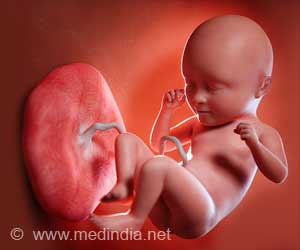But as Aditya Bardia, MD, MPH, from the Mass General Cancer Center and colleagues previously reported, patients with metastatic TNBC treated in a large clinical trial with the compound sacituzumab govitecan (SG; tradename Trovdely) lived nearly twice as long as patients treated with chemotherapy alone.
‘The findings have potential clinical significance for guiding antibody-drug conjugate sequencing for patients with breast cancer.’
SG is an antibody-drug conjugate, consisting of an antibody targeted to a receptor called Trop2 found on the surface of most breast cancer cells, plus a cancer-killing compound known as SN-38 (topoisomerase I inhibitor). SG is designed to specifically seek out breast cancer cells and deliver SN-38 as its toxic “payload.”
Yet some patients with metastatic TNBC either do not benefit from treatment with SG or have an initial response to treatment but then develop drug-resistant disease.
Now, Bardia, with Leif Ellisen MD, PhD, director of Breast Medical Oncology at Mass General Cancer Center, and MGH colleagues, report that they have identified for the first time two separate alterations in the genome of TNBC cells that allow them to develop resistance to the antibody-drug conjugate in patients with triple-negative breast cancer.
“We undertook a study to look at the mechanisms of acquired resistance,” says Ellisen.
“In terms of de novo resistance, the data supported prior studies which suggested that the complete absence of Trop2 could be an important predictor of primary resistance. But the really remarkable part of the study had to do with acquired resistance,” he says.
When they studied the genomic profiles of tissues sampled both before treatment and after disease progression, they found that in multiple metastatic lesions from one woman who had an initial robust response to SG but later had disease progression and died from the disease, there were different molecular mechanisms of resistance in different metastatic lesions.
“All of the resistance mechanisms were driven by genetic changes in the metastatic tumor cells that were not present in the primary tumor. Remarkably, in one set of metastatic lesions there was a mutation in the Trop2 target of the antibody, and in another set of lesions there was actually a mutation in the target of the cytotoxic [cell-killing] payload,” says Ellisen.
“This is the first report describing mechanisms of acquired resistance to sacituzumab govitecan,” adds Bardia.
The study was supported by grants from the National Institutes of Health, the DoD Breast Cancer Research Program, the Terri Brodeur Breast Cancer Foundation Fellowship, MGH ECOR Fund for Medical Discovery Fellowship, Susan Eid Tumor Heterogeneity Initiative, Tracey Davis Breast Cancer Research Fund and by the Broad/IBM Cancer Resistance Research Project.
Source: Eurekalert



